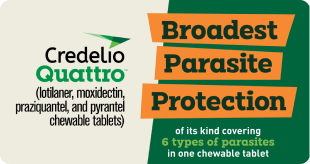Warm weather brings pesky parasites. Not only can tiny, blood-sucking creatures really bug your horse, they can also spread disease. Here’s what you should know about fleas and ticks on horses, and how you can manage them so your horse stays healthy.
Ticks On The Trail
Riding on wooded trails in the summer is a great way to stay in the shade and beat the heat. But ticks, too, prefer to spend the summer on cool, shady trails, perching on vegetation in hopes that you and your horse will brush up against them.
Before going for a ride on the trail, protect your horse against ticks. Absorbine Ultrashield is a must-have for the summertime, as it protects against ticks, flies, mosquitoes, and more for up to 17 days after application.
Even if you’ve used a tick preventative product, you should still check your horse for ticks after every trail ride. Different species of ticks tend to favor different areas of the horse’s body, but they generally cling on wherever they can and crawl to areas where the horse’s hair is thin, such as behind the elbows, in the ears, near the genitals, and on the chest.
Ticks carry Lyme disease and anaplasmosis, infections that affect both horses and people. Fortunately, an infected tick will need to be latched onto you or your horse for 36-48 hours before they can transmit infection. Gently remove embedded ticks with tweezers, getting as close to the skin as possible to avoid leaving mouthparts behind. Pull straight out without squeezing or twisting, as the tick can regurgitate blood into your horse and spread infection.
Also, keep pastures clear of woodpiles, brush, and trees, all of which tend to harbor ticks. You may need to put up fencing to keep your horse from exploring wooded areas while they’re turned out.
Do Horses Get Fleas?
While fleas may give your cats and dogs a hard time, they rarely jump onto horses. Fleas are usually species-specific and prefer animals that cozy up in a den, where they can eventually lay eggs, to horses, which are always on the move.
If your barn has other animals that are infested with fleas, a few may bite your horse, but they typically won’t stay for long. Fleas can be opportunistic, though, so they sometimes infest foals, as well as horses that are underweight, ungroomed, or immunocompromised.
Horses can also get lice, though they’re uncommon and, like fleas, tend to attack immunocompromised animals. Treatments like Absorbine Ultrashield contain pyrethrins, which are effective against lice, fleas, and most pests.
Keeping Your Horse Safe From Pests
Grooming your horse regularly and using a fly spray like Absorbine Ultrashield will help keep most pests under control. If they’re still biting, treating your horse’s environment is the next step, as well as treating any other animals that they spend time around.
In and around the barn, get rid of any yard waste and standing water, and muck stalls often to avoid attracting flies. If needed, use an outdoor premise spray to treat for pests.
Get in touch with your veterinarian if you’re having trouble identifying or getting rid of a pest that’s bugging your horse, or if your horse develops open sores, hair loss, or other concerning symptoms.




































